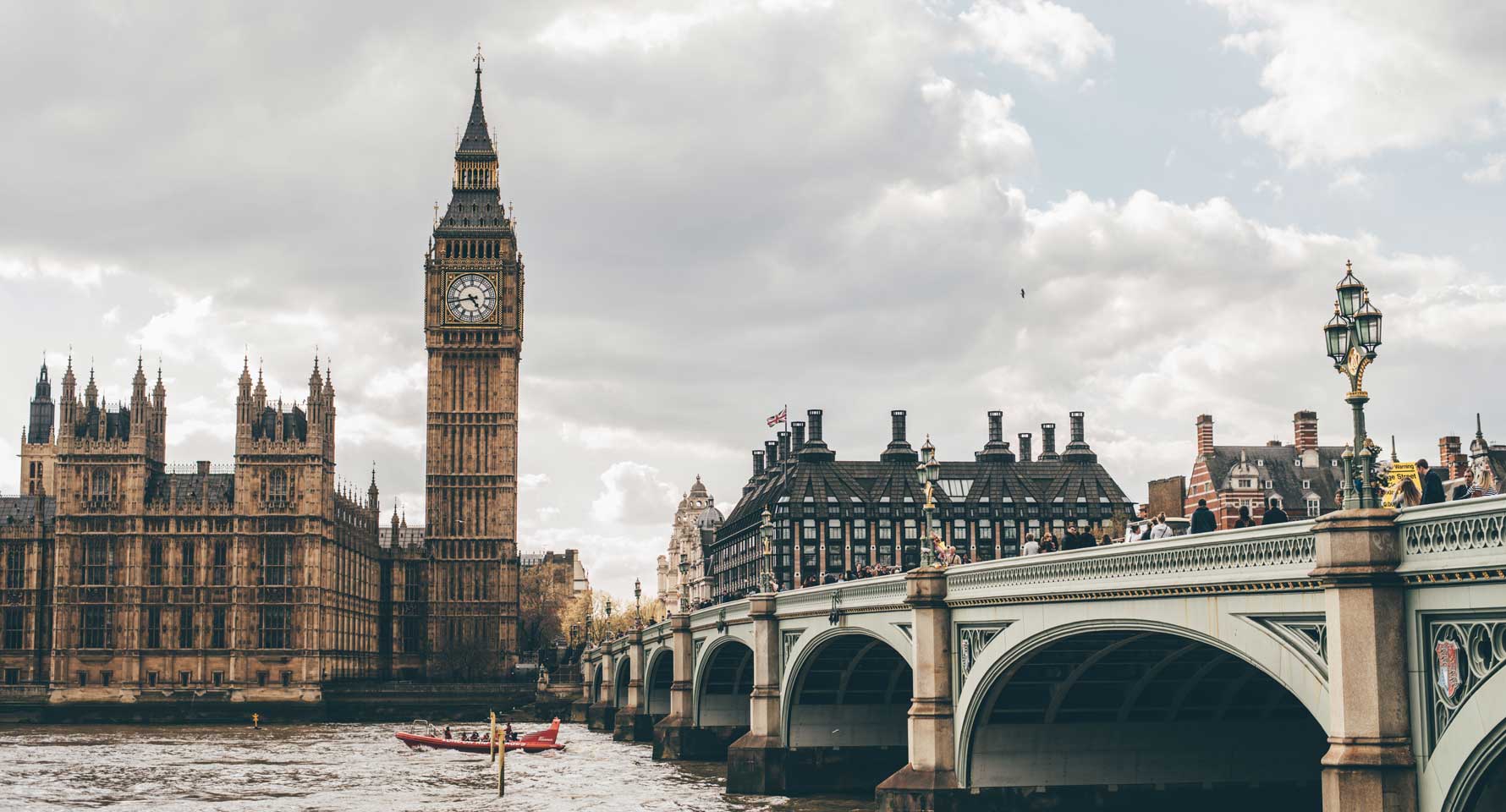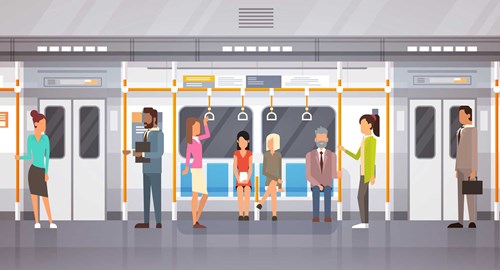Moving to London

London attracts a high number of career-driven individuals owing to its high status as a global financial powerhouse. If you're moving to London from another country as part of a work assignment, or to accompany your family or partner, there are many decisions to be made and factors to consider. Where should you live? Where should your children go to school? Should your spouse get a job? In this great city of more than 8.7 million people, you're bound to find fellow expatriates who have made the same choice of taking on a career challenge and getting to know London from a different perspective.
Welcome to the Big Smoke!
London was once known as the "Big Smoke." Back in the 19th century at the height of the Industrial Revolution, the area was usually covered in thick, grey smog due to the massive coal-burning at that time. The same nickname was given to "The Great Smog of 1952" which happened during December of that year and brought the entire city to a standstill for five days.
If you're moving from a tropical country, it's likely that the UK's climate might be a shock to your sunshine-powered system, especially during the winter season. Generally, those who live in London experience its temperate climate with cool to warm summers, and freezing winters without the requisite snow. Summer can bring temperatures soaring up to 38 degrees Celsius, especially in the city, and more recent changes in the world's climate have also brought severe storms and hurricanes. Make sure to have a brolly (umbrella) on hand!
The World in the Big City
While the actual City of London only measures about a square mile – 1.12 square miles or about 2.90 square kilometres – Greater London geographically is much bigger and is divided into 32 boroughs or local government districts. For more information about London's boroughs as well as a directory of services they offer, check out the London Council website at https://www.londoncouncils.gov.uk/.
As of 2017, the estimated London population is around 9.3 million, which makes it the largest city in the United Kingdom, the largest in the European Union (EU) and the third-largest city in Europe. Apart from EU nationals hailing from Poland, Italy, Spain, Portugal, Lithuania, and France, to name a few, the biggest number of people in London - around 5 million, to be exact - comes from India. The rest hail from Bangladesh, Romania, Pakistan, Nigeria, Ghana, Jamaica, the Philippines, Kenya, Turkey, the United States, Australia, and South Africa.
As such, it's not a big surprise to hear so many languages spoken in London, and for you to meet people from all over the world right in your own neighbourhood. However, the vote to have Britain leave the European Union in March 2019 has so far resulted in a big number of EU nationals who live and work in the UK opting to leave instead.
Do You Need a Work Visa for the UK? It Depends Where You're From
Prior to Britain's vote in 2016 to leave the European Union, citizens from the 28 EU member states and from EFTA (European Free Trade Association) countries – which are Iceland, Liechtenstein, and Norway – can live and work in the UK without restrictions, along with their families.
The UK government website at https://www.gov.uk states: "There will be no changes to the rights and status of EU citizens living in the UK until 2021." However, all this may change once Britain officially exits the European Union in March 2019. Get more information at https://www.gov.uk/settled-status-eu-citizens-families.
Expatriates hailing from outside the European Union are required to get a work permit in order for them and their families to legally live, work and study in the UK. The primary requirement for a work permit is a valid job offer from a viable employer in the UK. The work permit specifies the particular role and company the applicant must fulfil, and the permit also stipulates that the holder must be able to support themselves and any of their dependents on their own, without having to rely on government funds to do so.
Which Visa Do You Need?
Tier 1, Tier 2 and Tier 5 visas are among the most frequent types of work permits granted by the UK government to expatriates, each with its own subcategories and requirements for eligibility. The visas are part of a points-based immigration system to help regulate immigration into the UK outside of the European Economic Area (EEA). Of these, the Tier 2 visa is what most expatriates usually need to obtain in order to work in the UK.
According to the ONS, between July and September of 2018, there were 2.25 million people from the European Union working in the UK, and 1.24 million non-EU nationals, an increase of 34,000 from 2017. The Gov.UK website records 167,271 work-related visas granted by the end of June 2018, which includes 5,502 Tier 1 visa, 96,376 Tier 2 visas, and 40,360 Tier 5 visas.
Investors, entrepreneurs and those classified as "exceptional talent" may apply for a Tier 1 Visa. The Tier 1 visa under the Entrepreneur subcategory is for people who wish to create or take over an existing business in the UK. The Investor visas are for those who investing capital in the UK, with threshold amounts ranging from GBP 2,000,000 to GBP 5,000,000 and GBP 10,000,000. For people recognized as exceptionally talented in various fields such as the sciences, humanities, engineering, the arts, medicine or digital technology, they may apply for the Tier 1 Exceptional Talent visa. Each subcategory has validity ranging from two years up to five years, along with its own set of eligibility requirements.
The Tier 2 work visa is for skilled, non-EU nationals with a confirmed job offer in the United Kingdom from a licensed sponsor along with the appropriate certificate of sponsorship. The visa's four subcategories include General, Minister of Religion, Sports Person and Intra-Company Transfer (ICT). The ICT, in particular, is for people working in multinational companies who are being transferred by their employers to their UK office or branch. Under the ICT subcategory are another set of subcategories designed to streamline applicants into the appropriate roles such as Established Staff, Graduate Trainee or Skills Transfer.
Tier 5 visas are designed for people moving to the UK for short-term work. The visas have several sub categories catering to different objectives such as Charity Worker, Religious Worker, Creative and Sporting, Government Authorized Exchange, International Agreement and Youth Mobility Scheme. The last one is similar to the working holiday visa program of other countries and is available for citizens of Australia, Canada, New Zealand, Monaco, Taiwan, Hong Kong, the Republic of Korea, and Japan.
For more information on getting a visa in the UK, please visit the Visas and Immigration section of https://www.gov.uk/.
Where Should You Live?
During the last official census by the UK's Office for National Statistics (ONS) in 2011, the population of Greater London was at 8.1 million and 7,375 people for those living in the City of London itself. Inner London residents at that time were recorded at 3.21 million and in Outer London at 4.9 million. The boroughs cover East London, West London, North London, and South London.
The boroughs covered by Inner London are Camden, the City of London, Greenwich, Hackney, Hammersmith and Fulham, Islington, Kensington and Chelsea, Lambeth, Lewisham, Southwark, Tower Hamlets, Wandsworth, and Westminster. These areas are much more expensive since they're closer to Central London, and therefore command higher costs of living than those in Outer London.
The Outer London boroughs consist of Barking and Dagenham, Barnet, Bexley, Brent, Bromley, Croydon, Ealing, Enfield, Haringey, Harrow, Havering, Hillingdon, Hounslow, Kingston upon the Thames, Merton, Newham, Redbridge, Richmond upon the Thames, Sutton, and Waltham Forest.
Each of these boroughs has its own zip code or postcode, which are usually made up of one or two letters, and one- or two-digit numbers to help identify its particular location along a street. As an example, the famous Sherlock Holmes Museum's location is at 221B Baker Street, Marylebone, London NW1 6XE.
London boasts one of the highest costs of living in the world. While it appears on the annual list of the world's most liveable cities, there also pros and cons to living in London like congestion, pollution, and expensive housing. Just like any other city in the world, the closer you live to the city, the higher your cost of living. Make sure to check with your employer beforehand if your accommodations are covered in your contract.
If you're single, sharing a flat makes rent and utility bills more affordable and enable you to save money. A flat is the British equivalent of an apartment, and maybe part of modern property development, or converted from a house into several rooms. But if you're moving as a family, you'll definitely need a bigger space. Detached houses are more spacious and may even have a garden. You're bound to find detached houses farther from Central London. Do your homework prior to your move by checking out rental listings and popular expat neighbourhoods to get an idea of the prevailing rates and the corresponding council tax in areas of London.
The Greater London Authority (GLA) runs its own website at www.london.gov.uk/, which provides, among others, a map showing the average rents for different types of housing available for rent in London. The map is updated quarterly and shows various accommodations ranging from single rooms for flatshares, studios and anywhere from one- to four-bedroom options. View the map here.
Taking Public Transport
The capital of the UK is highly accessible thanks to its extensive transport network that moves its more than 9 million residents all over easily. If you're moving to London, familiarize yourself with the many public transport options on hand. While you can also choose to walk or cycle, chances are, you'll be an Oyster card-carrying passenger in no time at all. This smart card makes paying easier since it's valid on almost all of London's public transport, and its stored value can be reloaded easily at any train station and even online.
The Underground, Overground, Trams, and Rail
London is synonymous with the London Underground, the most popular rapid train system in the UK carrying over 5 million passengers daily and 1.35 billion annually through its 11 lines. With its distinctive red and blue logo, the Tube is the most popular mode of transport in the whole of London and extends into certain areas of Buckinghamshire, Essex, and Hertfordshire. The Central Line is the longest Tube line spanning 49 stations over 74 kilometres, from Epping, Essex to West Ruislip in the Hillingdon borough, and traversing Central London.
Aside from the Underground, other train and rail options are the London Overground, the London Trams, the National Rail, and the Docklands Light Railway. These go through the inner and outer suburbs of London and serve as connections for a huge number of Tube and rail stations as well as bus routes.
The London Overground has 112 stations and passes through 23 of London's boroughs while the London Trams (formerly known as the Tramlink and Croydon Tramlink) has 34 trams servicing 39 stops and over 50 bus routes. Serving East London is the Docklands Light Railway (DLR) which uses a computerized, driverless system and stops at 45 stations along the way. For expats, especially those with families who chose to settle outside of London, the National Rail is the best way to efficiently commute into London and is operated by several private companies.
Taking the Scenic Route
For a more scenic way to travel to work and school, the London River Services offers a fleet of passenger boat services via its licensed independent boat operators via eight docks along the Thames: Greenwich, Tower, Bankside, Blackfriars, Festival, Embankment, Westminster and Millbank.
The more recent addition to London's public transport services is the Emirates Air-Line, an urban cable system that started operating in 2012. It crosses the Thames river between Greenwich and the Royal Docks with a journey time of 10 minutes. Its 36 cable cars can also accommodate wheelchair users and cyclists and is open seven days a week.
Take the Bus, Taxi or Car?
The city is also known for its red double-decker buses that ply the streets everywhere. The current fleet of London buses number over 9,300, including the 2,500 hybrid electric buses – the largest in Europe so far - that help reduce pollution and carbon dioxide emissions by up to 30 per cent. Aside from being wheelchair-friendly, passengers can also access live bus arrival information via their smartphones, SMS or online.
London's famous black taxicabs can also be found all over the city, and are famous for its drivers possessing "The Knowledge." Drivers take up to three years to memorize and navigate London's entire road network.
If you plan to drive a car in London, make sure you know about the Congestion Charge and the upcoming T-charge. The Congestion Charge is similar to Singapore's Electronic Road Pricing (ERP) which imposes a fine for entering designated areas in Central London during peak hours. The T-Charge or Toxicity Charge is officially known as the Emissions Surcharge, an additional fee for older vehicles designed to curb vehicle pollution. The T-Charge is to be replaced by the Ultra Low Emission Zone in April 2019 which will cover all vehicles that travel in Central London.
For more information about London's transport system, visit the Transport for London (TfL) website at https://tfl.gov.uk/.








